Agenda 2030
| Publication Cover | Title |
|---|---|
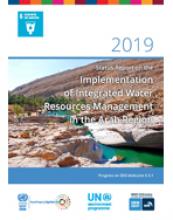 |
2019 Status Report on the Implementation of Integrated Water Resources Management in the Arab Region E/ESCWA/SDPD/2019/TP.4 This report provides an Arab region baseline for Sustainable Development Goal (SDG) indicator 6.5.1: Degree of integrated water resources management implementation. The data presented in this... |
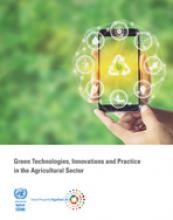 |
Green Technologies, Innovations and Practice in the Agricultural Sector E/ESCWA/SDPD/2019/INF.8 The Arab region faces many challenges including severe water scarcity, rising population, increasing land degradation, aridity, unsustainable energy consumption, food insecurity and deficiency in... |
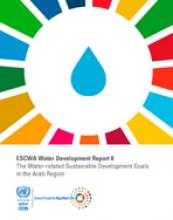 |
ESCWA Water Development Report 8: The Water-related Sustainable Development Goals in the Arab Region E/ESCWA/SDPD/2019/5 Water-related SDGs have a central role in achieving the 2030 Agenda for Sustainable Development and its interlinked Sustainable Development Goals (SDGs) and targets. While the dedicated goal on... |
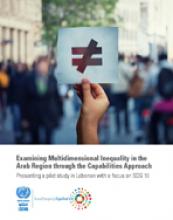 |
Examining multidimensional inequality in the Arab region through a capabilities lens: Presenting a pilot study in Lebanon with a focus on SDG 10 E/ESCWA/SDD/2019/TP.7 This study takes a critical look at Sustainable Development Goal 10 – aimed to reduce inequality within and among countries – and proposes an innovative research approach to capture... |
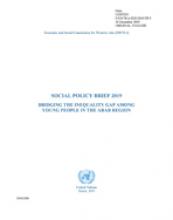 |
Bridging the Inequality Gap among Youth in the Arab Region E/ESCWA/SDD/2019/TP.5 This policy brief discusses selected dimensions of inequality among Arab youth and highlight the gaps and challenges that affect youth policy development and implementation. It concludes with a... |
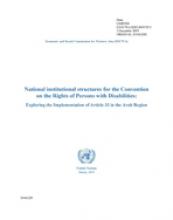 |
National Institutional Structures for the Convention on the Rights of Persons with Disabilities: Exploring the Implementation of Article 33 in the Arab Region E/ESCWA/SDD/2019/TP.3 This study examines Article (33) on “National Implementation and Monitoring” in the Convention on the Rights of Persons with Disabilities. Article 33 is quite groundbreaking as it is the first... |
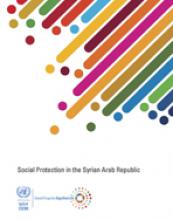 |
Social Protection in the Syrian Arab Republic E/ESCWA/SDD/2019/TP.12 This country profile outlines the statutory social protection system in the Syrian Arab Republic including social insurance, social assistance, and social health-care provision. It furthermore... |
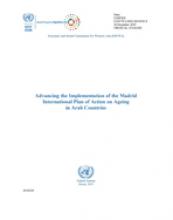 |
Advancing the Implementation of the Madrid International Plan of Action on Ageing in Arab Countries E/ESCWA/SDD/2019/INF.8 This policy brief provides an overview of the Madrid International Plan of Action on Ageing (MIPAA) and its linkages to the 2030 Agenda for sustainable development. It highlights MIPAA’s... |
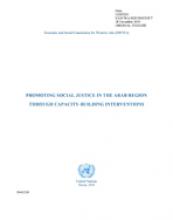 |
Promoting Social Justice in the Arab Region through Capacity Building Interventions, Social Development Bulletin, Vol.7, No.3 E/ESCWA/SDD/2019/INF.7 This bulletin explores the connection between innovative capacity building and the ability of stakeholders to implement the SDGs. It details the capacity building work undertaken by ESCWA’s... |
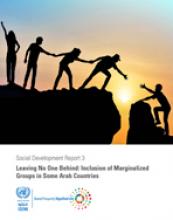 |
Leaving no one behind: Integrating marginalized groups in some Arab countries E/ESCWA/SDD/2019/4 Unprecedented social progress has been recorded around the world in the past few decades, with significant drops in poverty levels. However, this progress has been uneven as social and economic... |
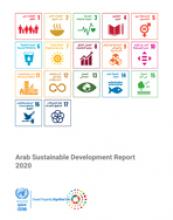 |
Arab Sustainable Development Report 2020 E/ESCWA/SDD/2019/2 Achieving sustainable development in the Arab region faces structural barriers that are often shared among the 22 Arab countries, despite variations in income level, natural resources, and... |
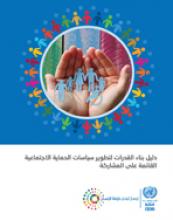 |
Manual for Building Capacities in Developing Social Protection Policies based on a Participatory Approach E/ESCWA/SDD/2017/TECHNICAL PAPER.9 The manual for building capacities in developing social protection policies based on a participatory approach is produced as part of ESCWA’s efforts aimed at strengthening... |
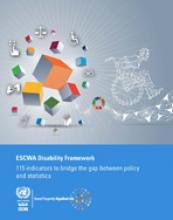 |
ESCWA Disability Framework: 115 indicators to bridge the gap between policy and statistics E/ESCWA/SD/2019/TP.3 ESCWA Disability Framework: 115 indicators to bridge the gap between policy and statistics, is the first three-dimensional disability framework that maps disability-related indicators to three... |
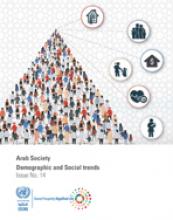 |
Arab Society: Demographic and Social trends Issue No. 14 E/ESCWA/SD/2019/5 Arab Society: A Compendium of Demographic and Social Statistics, Issue No. 14 is the latest in a series of biennial compendia of the Statistics Division of the Economic and Social Commission... |
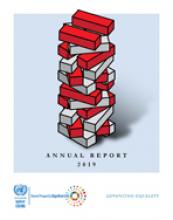 |
ESCWA Annual Report 2019 E/ESCWA/OES/2020/1 The last decade was difficult for the Arab region. A few countries fell into civil war while others suffered from serious political and economic instability. As a result, millions of people across... |
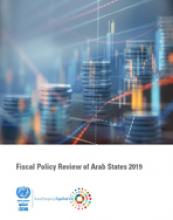 |
Fiscal Policy Review of Arab States 2019 E/ESCWA/EDID/2019/WP.20 This fiscal review is first in the series following the ESCWA 2017 flagship report “Rethinking Fiscal Policy for the Arab Region”. A major focus of this fiscal policy review 2019 is to create a... |
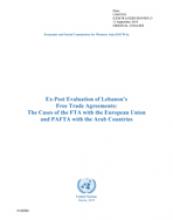 |
Ex-Post Evaluation of Lebanon’s Free Trade Agreements: The Cases of the FTA with the European Union and PAFTA with the Arab Countries E/ESCWA/EDID/2019/WP.13 This study examines the tangible impact of the integration agreements with Arab countries and the European Union on the Lebanese economy, as well as the reasons behind their relatively poor... |
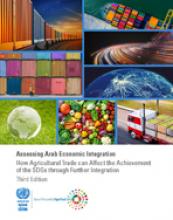 |
Assessing Arab Economic Integration: How Agricultural Trade can Affect the Achievement of the SDGs through Further Integration Third Edition E/ESCWA/EDID/2019/4 The severity of the COVID-19 pandemic and the scale of its impact across the Arab region highlight the need for collaborative economic integration that strengthens the region’s recovery and builds... |
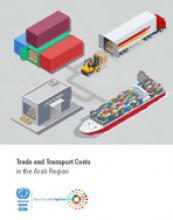 |
Trade and transport costs in the Arab region E/ESCWA/EDID/2019/3 Trade costs are a major determinant of trade competitiveness and integration in regional and global economies. The Arab region has high trade costs, resulting in low trade integration at the... |
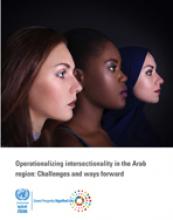 |
Operationalizing intersectionality in the Arab region: Challenges and ways forward E/ESCWA/ECW/2019/TP.5 The present paper focuses on intersectionality as an analytical approach and calls for a multidimensional understanding of gender in the Arab region, positing that this produces a more... |





